Grades of Lamb:
There are different grades of lamb which you should look out for when choosing yours. The grades range between prime, choice, good, utility, and cull. If you opt for prime cuts, you won’t be disappointed!
Covered vs. Uncovered:
Many roasted meat recipes call for you to cover your dish while it roasts. There’s no need for that in this roasting recipe. If you’re working with a shoulder, you’ll be roasting it for much longer and so in that case, you should cover it. Covering helps to retain moisture, but because your meat is only roasting for about 2-hours tops, it’s not necessary here.
How Long Should Leg of Lamb Rest?
No matter how you choose to cook your dish, giving it time to rest is key if you want it to turn out well. This is because letting the meat rest will help it become juicer, as well as allow it to finish some of its internal cooking. The FDA recommends that you let your meat rest for a minimum of 3 minutes before slicing and eating. If you have the patience, you should wait 15 minutes. 15 minutes of rest gives it enough time for the inside to finish cooking and delivers the juiciest cut of meat you can get.
Cooking to Temperature and Not Time:
There are some recipes where cooking time isn’t a suggestion but rather an obligation. Okay – no one is going to bang down your door if you don’t follow the timing instructions to a tee, but you get the gist. That said, the FDA recommends that you cook your lamb to an internal temperature of 145 degrees Fahrenheit. This will help ensure that all the harmful bacteria are killed and that it is safe for you and your loved ones to enjoy. Roast lamb is one of those instances where you’re going to want to cook to internal temperature and not time. That means you’ll need to use a food-safe thermometer. Here are the internal temps for each level of doneness, after your meat has rested:
Does Lamb Get More Tender the Longer You Cook it?
Like most red meats, lamb does get more tender the longer you cook it. You should always opt to roast it for longer and at lower temperatures. That’s why this recipe calls for you to adjust the heat in the middle of the cooking time. Leg of lamb is naturally filled with more muscle fibers, and you need those low temps to break them down. This process makes the meat more tender!
Serving Suggestions:
Serve your roast lamb as the main course alongside some of these sides, and your meal is sure to please. As a rule of thumb, a well-rounded meal includes protein, carbohydrates, and vegetables:
Potatoes: Mashed or roastedRoasted veggies: Brussels sprouts, squash, broccoli, or carrotsBread: Garlic bread, breadsticks, or French baguette
If you like this recipe, you may be interested in these other delicious main course recipes:
Steak Bites and GnocchiSheet Pan Chicken CapreseSlow Cooker Sweet PorkOld Fashioned Goulash
Δ Δ

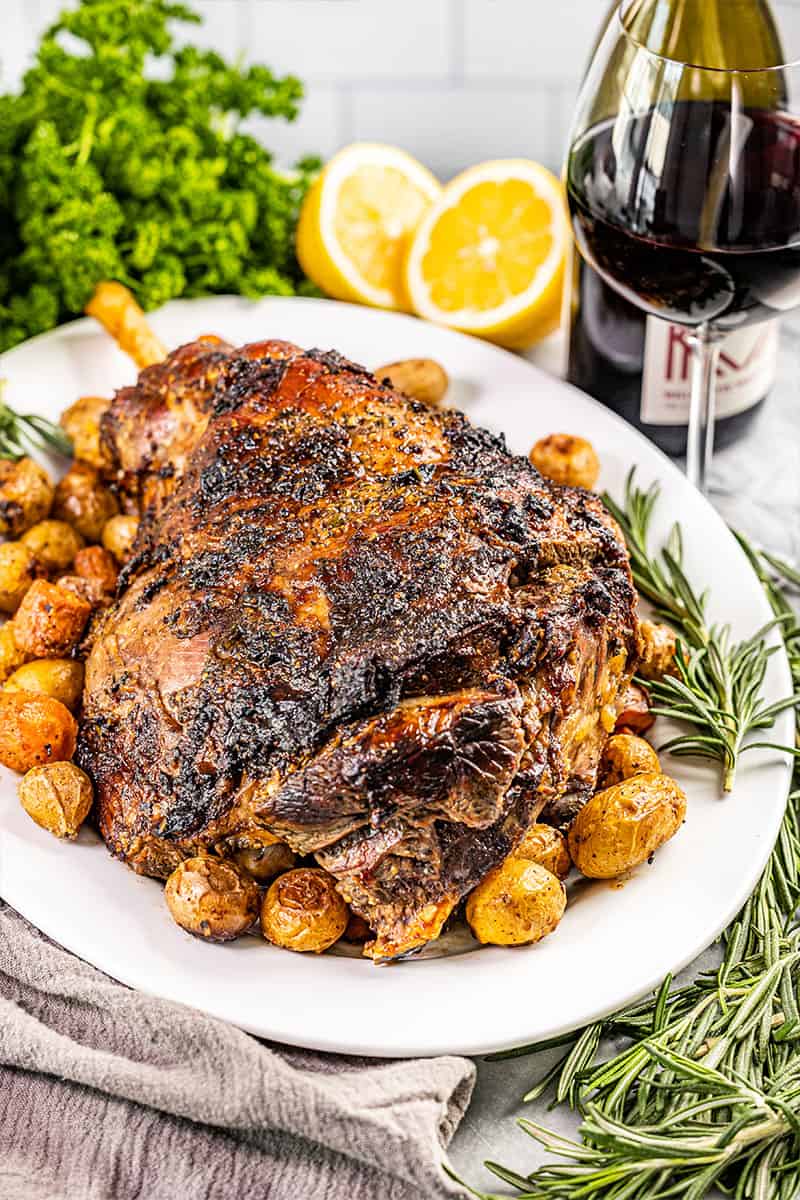
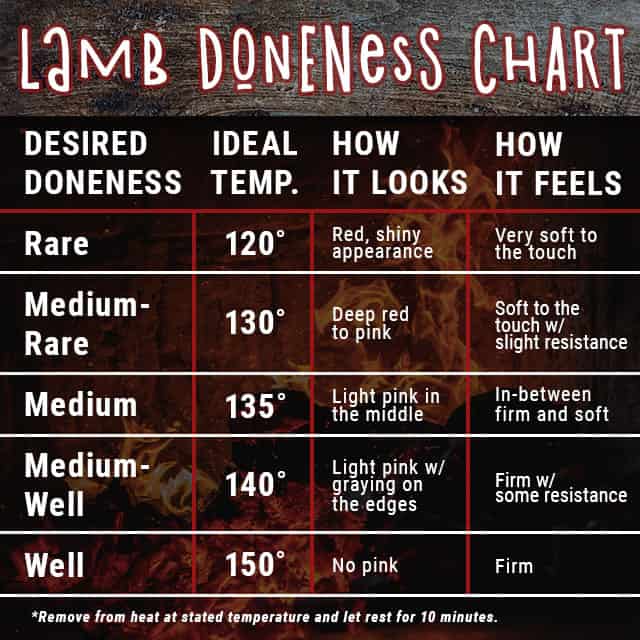
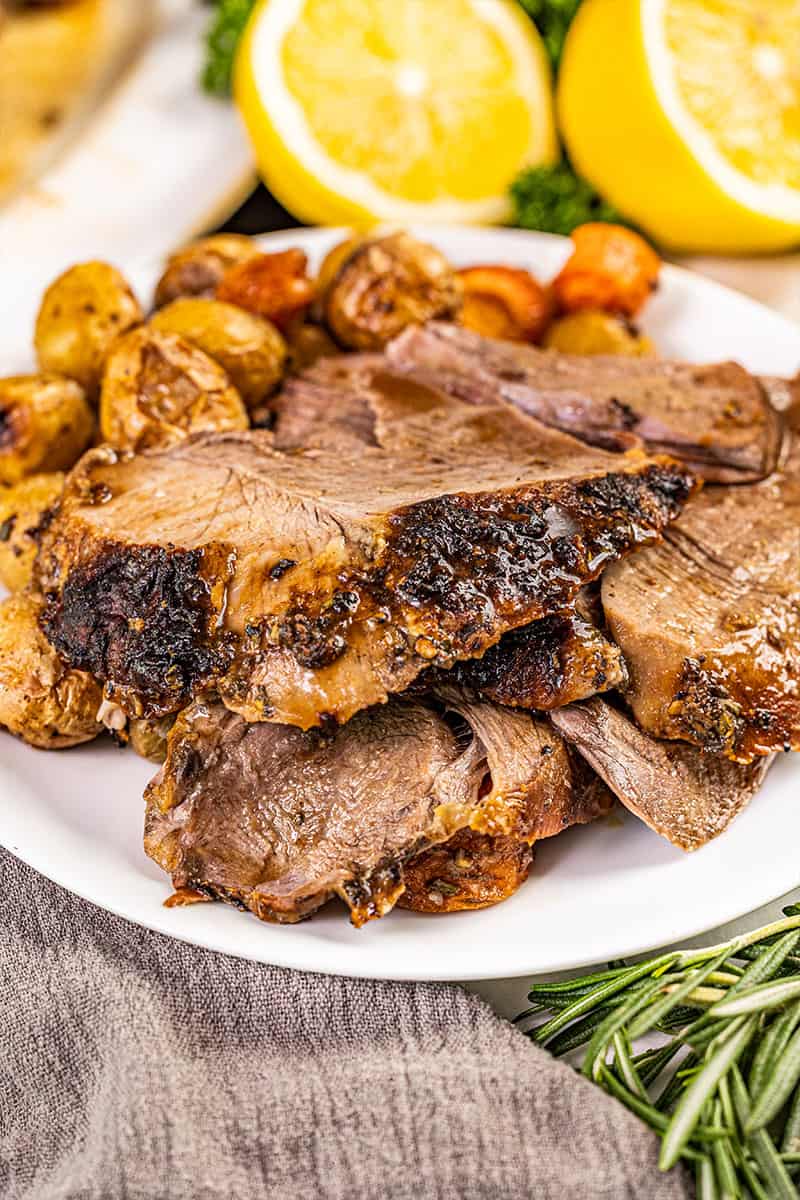
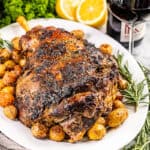
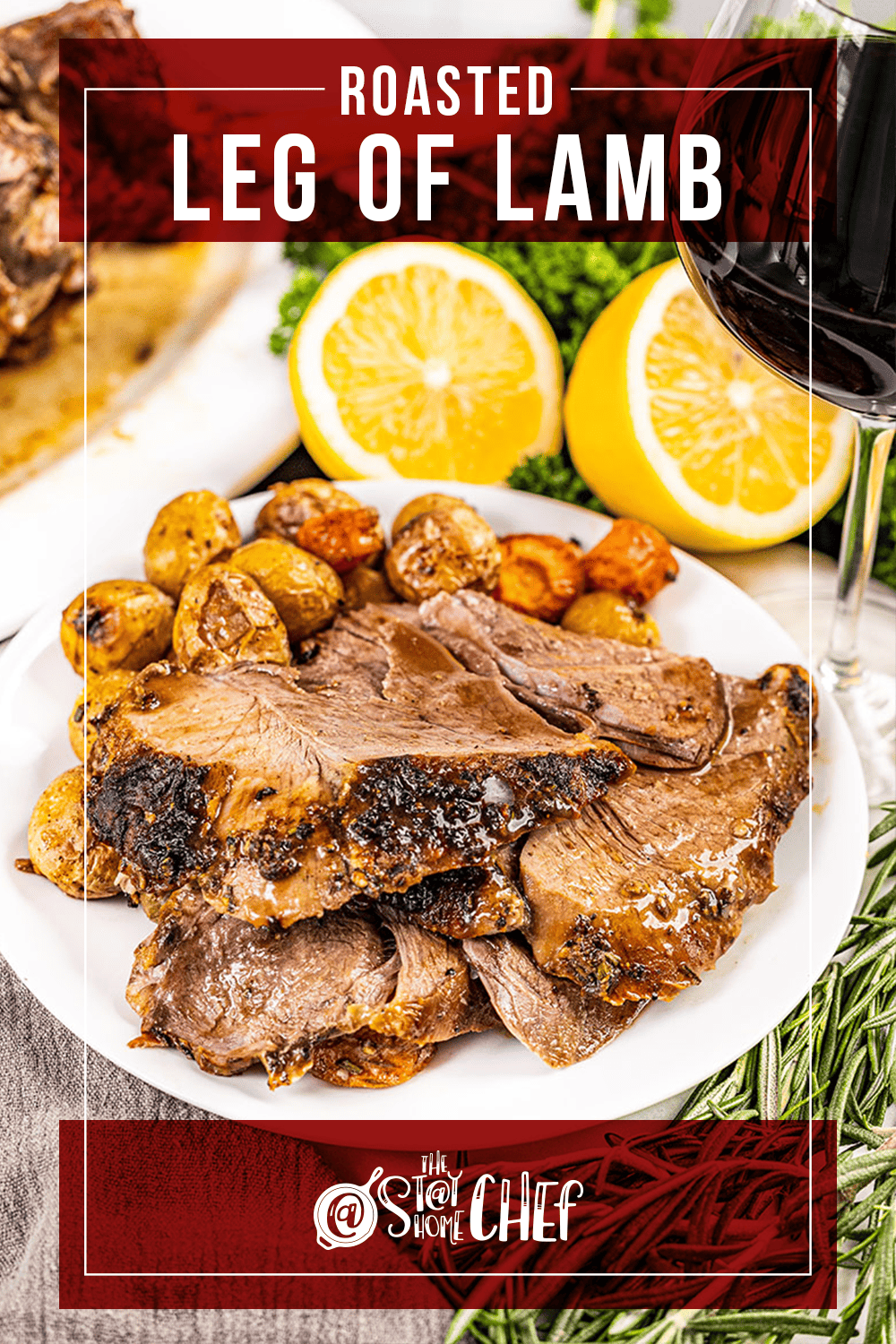

![]()